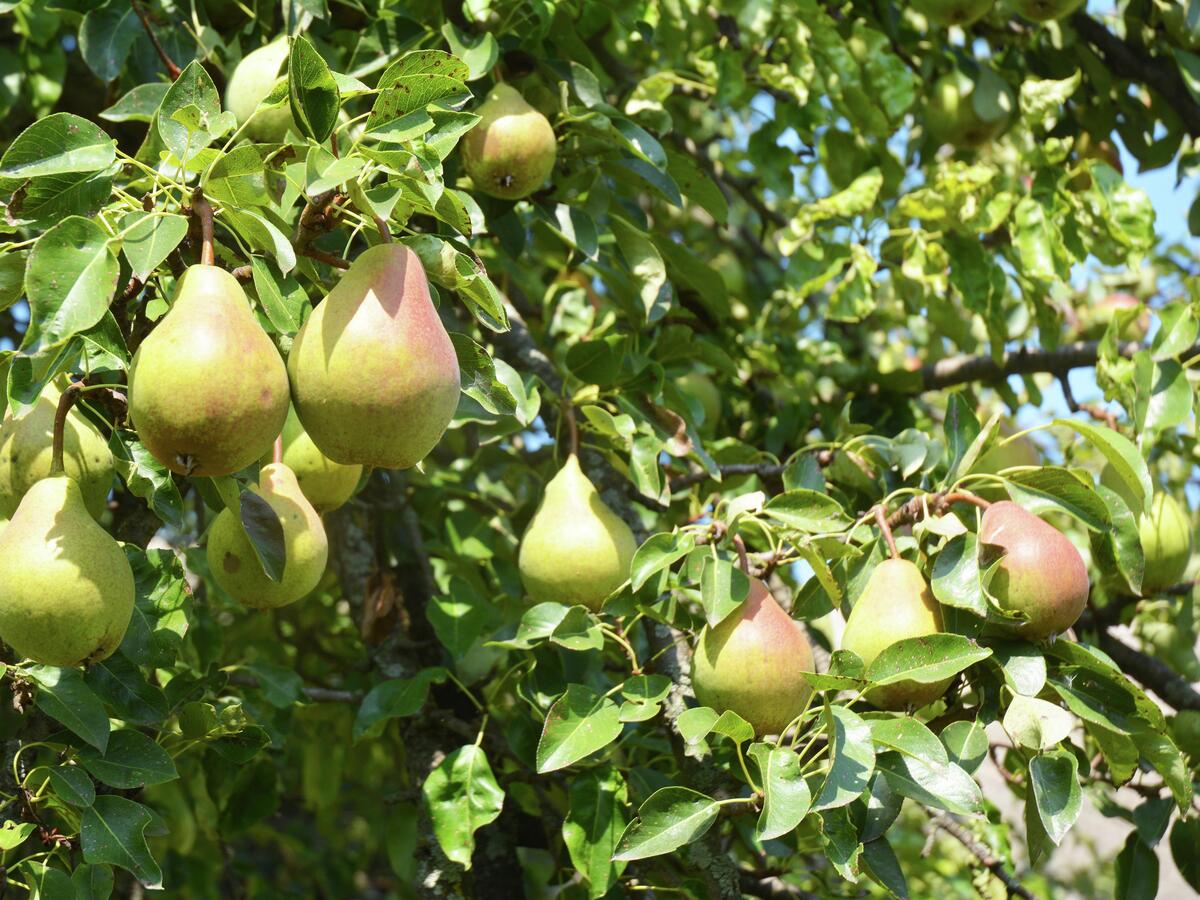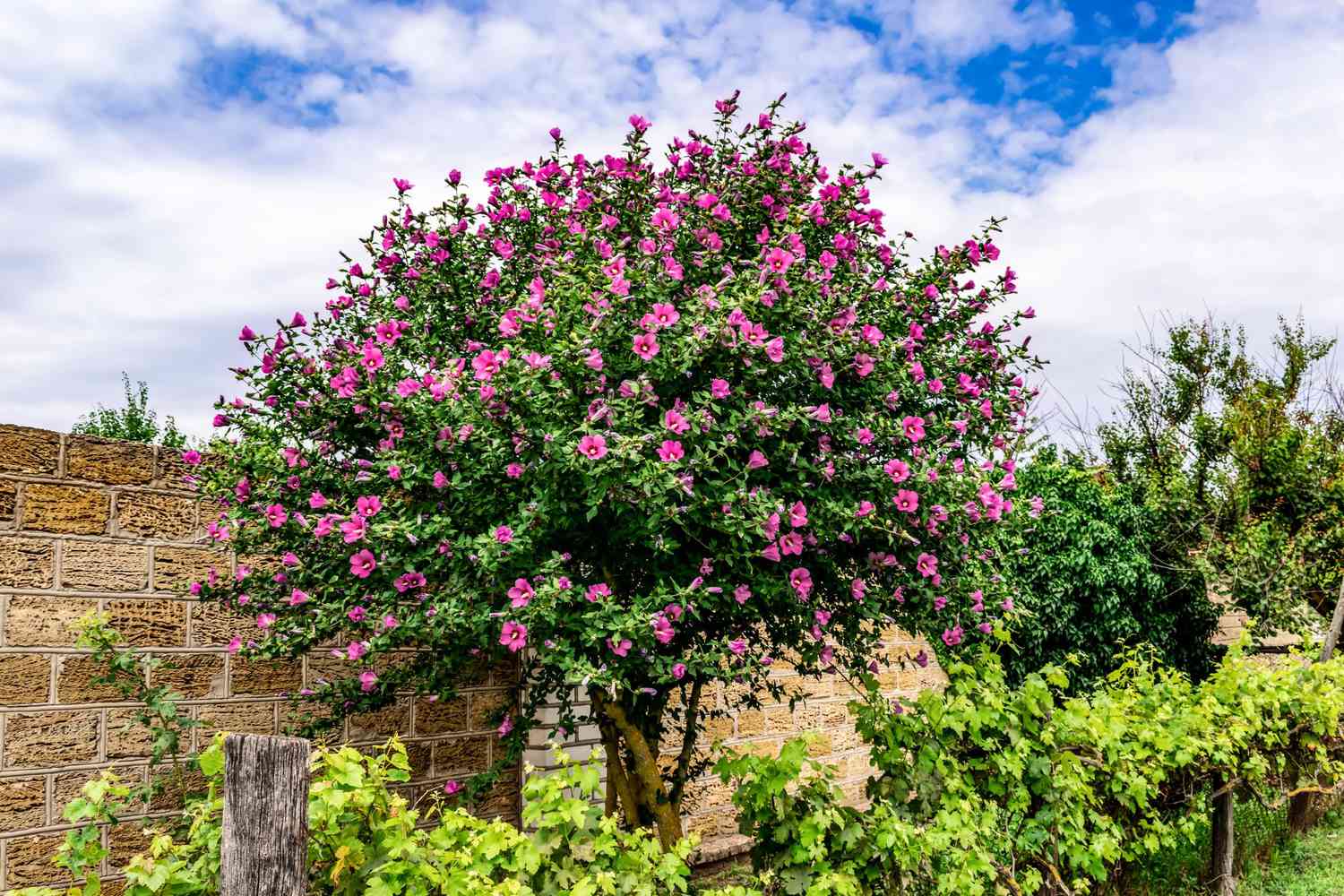Home>Gardening Techniques>Plant Care>How Big Do Tulip Trees Get


Plant Care
How Big Do Tulip Trees Get
Modified: January 22, 2024
Discover the optimal plant care for Tulip Trees. Learn how to ensure your Tulip Trees thrive and find out how big they can get.
(Many of the links in this article redirect to a specific reviewed product. Your purchase of these products through affiliate links helps to generate commission for Chicagolandgardening.com, at no extra cost. Learn more)
Table of Contents
Introduction
Welcome to the colorful world of tulip trees! With their striking blooms and impressive size, these trees are sure to captivate anyone’s attention. If you’re considering adding a tulip tree to your garden or landscape, it’s important to understand just how big these trees can get. In this article, we’ll explore the factors that affect the size of tulip trees, their average height and spread, growth rate, pruning and maintenance tips, as well as potential issues and concerns with large tulip trees.
Tulip trees, scientifically known as Liriodendron tulipifera, are native to eastern North America and are part of the magnolia family. Despite their name, tulip trees aren’t actually related to tulips. Instead, they received their name due to the shape of their flowers, which resemble tulips when in full bloom. These trees are renowned for their graceful form, attractive foliage, and vibrant flowers, making them a popular choice for landscaping and ornamental purposes.
Not only are tulip trees aesthetically pleasing, but they also provide numerous benefits to the environment. They are known to attract birds and pollinators, such as bees and butterflies, due to their nectar-rich flowers. Additionally, these trees have a high carbon dioxide absorption rate, helping to improve air quality. Overall, tulip trees are a wonderful addition to any garden or landscape, bringing beauty and ecological advantages.
To fully appreciate the magnitude of tulip trees, it’s important to understand the factors that can influence their size. From their genetic makeup to environmental conditions, various factors contribute to how tall and wide a tulip tree can grow. By considering these factors, you can plan and manage your tulip trees effectively, ensuring they thrive and reach their maximum potential.
Overview of Tulip Trees
Tulip trees, also known as yellow poplars, are deciduous trees that belong to the magnolia family. They are known for their impressive size and distinct features. The leaves of tulip trees are unique, with a distinct tulip-like shape and bright green color. These leaves turn a vibrant yellow in the fall, adding a splash of color to the landscape.
One of the most striking features of tulip trees is their flowers. Blooming in late spring or early summer, the flowers are large and showy, with a distinct orange-yellow color and a touch of green. The flowers are cup-shaped, resembling tulips, which is where the common name of the tree originated.
Aside from their aesthetic appeal, tulip trees also have a straight trunk and a tall, upright growth habit. Mature trees possess a pyramidal shape and a broad canopy that provides ample shade. The bark of tulip trees is smooth and grayish brown, adding to their overall visual appeal.
Tulip trees are known for their fast growth rate, with young specimens capable of adding several feet to their height each year. This rapid growth makes them an excellent choice for creating shade or privacy in a shorter amount of time compared to other tree species. However, it’s important to consider their potential size and space requirements when selecting an appropriate planting location.
These impressive trees are well-suited for a variety of climates and soil conditions. They thrive in moist, well-drained soils but can tolerate a range of soil types. Tulip trees prefer full sun to partial shade, requiring a minimum of four to six hours of direct sunlight each day to thrive.
Overall, tulip trees are cherished for their size, unique leaf shape, vibrant flowers, and fast growth rate. Whether used as a focal point in a landscape or to provide shade and privacy, tulip trees are a stunning addition to any garden.
Factors Affecting the Size of Tulip Trees
The size of tulip trees can vary depending on several factors. Understanding these factors can help you predict and manage the growth of your tulip trees effectively. Here are some key factors that can influence the size of tulip trees:
- Genetics: The genetic makeup of a tulip tree plays a significant role in determining its size. Different varieties or cultivars of tulip trees may have varying growth patterns and maximum heights. When selecting a tulip tree variety, consider the expected size based on its genetic characteristics.
- Environmental Conditions: The environment in which a tulip tree grows can greatly impact its size. Adequate sunlight is crucial for optimal growth and development. Tulip trees require a minimum of four to six hours of direct sunlight each day to thrive. Additionally, soil conditions, water availability, and climate can influence the overall health and size of the tree.
- Planting Location: The location where you plant your tulip tree can also affect its size. Providing enough space for the tree to grow to its full potential is essential. Consider the mature height and spread of the tulip tree and choose a location that allows ample room for its growth without any obstructions or restrictions.
- Pruning and Maintenance: Proper pruning and maintenance practices can impact the size and shape of tulip trees. Regular pruning helps establish a strong framework and eliminates any weak or diseased branches, promoting healthy growth. However, excessive pruning can stunt the tree’s growth. It’s important to follow appropriate pruning guidelines and seek professional advice if needed.
- Age of the Tree: The age of the tulip tree can affect its size to some extent. Younger trees have the potential for rapid growth, while older trees may have reached their maximum height and spread. It’s important to consider the age of the tree when assessing its potential size.
By considering these factors, you can estimate how big your tulip tree is likely to grow and make informed decisions about its care and maintenance. Keep in mind that while you can influence some aspects of the tree’s growth, there are inherent genetic and environmental factors that may determine its final size. A well-cared-for tulip tree can reach impressive heights, adding beauty and grandeur to your landscape.
Average Height and Spread of Tulip Trees
Tulip trees are known for their impressive size, making them a grand addition to any landscape. When it comes to their height and spread, these trees can reach remarkable dimensions. Let’s delve into the average height and spread of tulip trees to help you plan and accommodate their size in your garden or landscape.
On average, mature tulip trees can reach a height between 70 to 90 feet, although some exceptional specimens may grow even taller. This makes them one of the tallest native hardwood trees in North America. The straight trunks of tulip trees allow them to soar high towards the sky, creating a commanding presence in the landscape.
As for the spread of tulip trees, the branches can extend horizontally to create a wide, rounded canopy. The average spread of tulip trees typically ranges between 35 to 50 feet, but it’s not uncommon for them to have a spread of up to 60 feet. This ample canopy provides abundant shade, making tulip trees an excellent choice for creating areas of respite in your outdoor space.
It’s important to note that the height and spread of tulip trees can vary depending on various factors such as genetics, environmental conditions, and cultural practices. Some tree cultivars or varieties may have slightly different growth habits and dimensions. Additionally, the location and care given to the tree can also influence its ultimate size.
When selecting a planting site for a tulip tree, ensure that there is enough space to accommodate its potential height and spread. Avoid planting them too close to structures or other trees, as their extensive branches and roots can cause damage over time. Giving them ample space to grow and thrive will allow them to develop their characteristic form and showcase their majestic presence.
Remember, the height and spread of tulip trees are not fixed numbers, and individual trees may deviate from the average. Healthy growth conditions and proper care can contribute to the tree reaching its full size potential. Regular monitoring and appropriate pruning can help maintain the desired height and spread and ensure the long-term health and beauty of your tulip tree.
Growth Rate of Tulip Trees
Tulip trees are renowned for their fast growth rate, making them an excellent choice for those seeking quick results in their garden or landscape. The growth rate of tulip trees is influenced by several factors and understanding these factors can help you anticipate and manage their growth effectively.
On average, tulip trees can grow anywhere from 1 to 2 feet per year under favorable conditions. However, it’s important to note that the growth rate can vary depending on factors such as genetics, environmental conditions, and cultural practices.
The genetic makeup of the tree plays a significant role in determining its growth rate. Different cultivars or varieties may have slightly different growth rates, with some being more vigorous than others. Selecting a tulip tree variety known for its fast growth can help you achieve the desired results more quickly.
Environmental conditions are another key factor influencing the growth rate of tulip trees. These trees thrive in full sun to partial shade, requiring a minimum of four to six hours of direct sunlight each day. They also prefer well-drained soils and slightly acidic to neutral pH levels. Providing optimal conditions ensures that the tree has the necessary resources for rapid growth.
Cultural practices, such as proper watering and fertilization, can also impact the growth rate of tulip trees. Regular watering during dry periods and the application of a balanced fertilizer can promote healthy growth. However, be cautious not to overwater or overfertilize, as this can have negative consequences on the tree’s overall health.
It’s important to note that the growth rate of tulip trees tends to slow down as they reach maturity. While young trees may have a faster growth rate, older trees may experience a more gradual rate of growth. This is a natural part of the tree’s life cycle, and it’s essential to adjust your expectations accordingly.
Proper pruning and maintenance can also influence the growth rate of tulip trees. Regular pruning helps to establish a strong branch structure and promotes healthy growth. However, excessive pruning can hinder growth. It’s important to follow pruning guidelines and consult an expert if needed.
By considering these factors and providing optimal growing conditions, you can ensure that your tulip trees grow at a healthy and vigorous rate. With their impressive growth potential, tulip trees can quickly transform your outdoor space and provide a breathtaking focal point for years to come.
Pruning and Maintenance Tips for Tulip Trees
Proper pruning and maintenance practices are essential for the health, aesthetics, and longevity of tulip trees. Regular attention will help shape the tree, maintain its structural integrity, and enhance its overall beauty. Here are some helpful tips to guide you in pruning and maintaining your tulip trees:
- Establish a pruning schedule: Begin pruning when the tree is young to promote a strong branch structure. Regular pruning sessions, preferably during the dormant season (late winter or early spring), will help maintain the tree’s form and health.
- Identify and remove dead or damaged branches: Inspect the tree regularly for dead, dying, or broken branches. These should be pruned off to prevent potential hazards and to promote overall tree health.
- Promote a central leader: Tulip trees naturally develop a single dominant trunk. If multiple leaders emerge, select the strongest and most central one to maintain a strong and upright shape. Remove or prune away competing leaders to encourage a dominant central leader.
- Avoid excessive pruning: While some pruning is necessary, avoid over-pruning tulip trees. Excessive pruning can weaken the tree and impede its growth. Stick to the 20-30% rule, which means you should not remove more than one-fifth to one-third of the tree’s canopy in a single pruning session.
- Trim lower branches if desired: If you prefer a higher canopy or want to create clearance beneath the tree, you can trim lower branches. However, be cautious not to remove too many at once, as these branches contribute to the overall structure and stability of the tree.
- Consult a professional if needed: If you are unsure about proper pruning techniques or have concerns about the health of your tulip tree, consider consulting an arborist or tree care professional. They can provide expert advice and handle more complex pruning tasks.
- Monitor for pests and diseases: Regularly inspect your tulip trees for signs of pests or diseases. Common issues that may affect tulip trees include aphids, scales, and fungal diseases. If you notice any problems, promptly address them with appropriate treatments or seek professional assistance.
- Maintain proper irrigation and fertilization: Adequate watering and fertilization are vital for the health and growth of tulip trees. Provide sufficient water during dry periods, especially in the tree’s early years. Apply a balanced fertilizer according to the recommended guidelines to ensure the tree receives necessary nutrients.
Remember, proper pruning and maintenance practices contribute to the overall health and beauty of your tulip trees. With regular care and attention, you can ensure that your trees thrive, maintain their structural integrity, and provide years of enjoyment and beauty in your landscape.
Potential Issues and Concerns with Large Tulip Trees
While large tulip trees can be majestic and beautiful additions to your landscape, there are a few potential issues and concerns that you should be aware of. By understanding and addressing these concerns, you can ensure the long-term health and safety of these impressive trees.
One common concern with large tulip trees is their potential to become susceptible to wind damage. Due to their size and relatively shallow root system, tulip trees can be more prone to toppling in high winds or storms. To help minimize this risk, it’s advisable to regularly inspect your trees for signs of compromised health, weak branches, or structural issues. Promptly addressing any identified problems through proper pruning or consultation with a professional arborist can help reduce the risk of wind-related damage.
Another issue to consider is the potential for root damage caused by invasive structures, such as sidewalks or driveways, in close proximity to the tree. Tulip trees have extensive, but shallow, root systems that can be sensitive to disturbance. It’s important to take precautions when constructing or renovating any structures near the tree’s root zone to avoid damaging the roots. Consult an arborist or tree care professional for guidance in preserving the health of the roots during construction projects.
Pest and disease issues can also affect large tulip trees. Common pests that may target tulip trees include aphids, scales, and caterpillars. Regularly inspecting the tree for signs of infestation, such as leaf damage or the presence of pests, can help address these issues before they escalate. In addition, certain fungal diseases, such as verticillium wilt or cankers, can impact the health of tulip trees. Proper maintenance practices, such as pruning infected branches or seeking professional assistance, can help manage these diseases effectively.
Lastly, it’s important to consider the potential interference with surrounding structures or landscaping due to the size and spread of large tulip trees. The extensive canopy of these trees can shade out other plants and limit their growth. Additionally, the falling leaves, flowers, and seed pods of tulip trees can require regular clean-up. It’s important to factor these considerations into your overall landscape design and maintenance plans.
Being aware of these potential issues and concerns with large tulip trees can help you better manage and maintain these stunning specimens. Regular monitoring, proper pruning, addressing root disturbances, and proactively managing pests and diseases will help ensure the continued health and beauty of your tulip tree, allowing you to enjoy its presence for many years to come.
Conclusion
Tulip trees are truly remarkable additions to any garden or landscape. Their impressive size, vibrant flowers, and unique leaf shape make them stand out among other trees. Understanding the factors that affect their size, the average height and spread they can achieve, their growth rate, and the importance of proper pruning and maintenance is crucial to successfully cultivate and care for these magnificent trees.
By considering the genetic makeup, environmental conditions, and planting location, you can anticipate the potential height and spread of tulip trees and plan accordingly. Their rapid growth rate ensures quick results, but it’s important to provide optimal growing conditions and avoid excessive pruning to promote healthy growth.
Regular pruning and maintenance practices, such as removing dead or damaged branches and establishing a central leader, contribute to the tree’s structural integrity and overall health. Avoiding common pitfalls, such as root disturbances or neglecting pest and disease management, will help ensure the long-term vitality of tulip trees.
While there are potential concerns and issues with large tulip trees, such as wind damage and interference with surrounding structures or landscaping, proactive monitoring and proper care can mitigate these risks. Consulting with professionals and seeking their expertise when needed will aid in the successful management of these beautiful trees.
In conclusion, with the right attention and care, tulip trees can achieve their full potential, providing shade, beauty, and ecological benefits to your outdoor space. Their impressive stature and unique features make them a statement piece in any landscape design. Embrace the grandeur of tulip trees and enjoy their stunning presence for generations to come.










